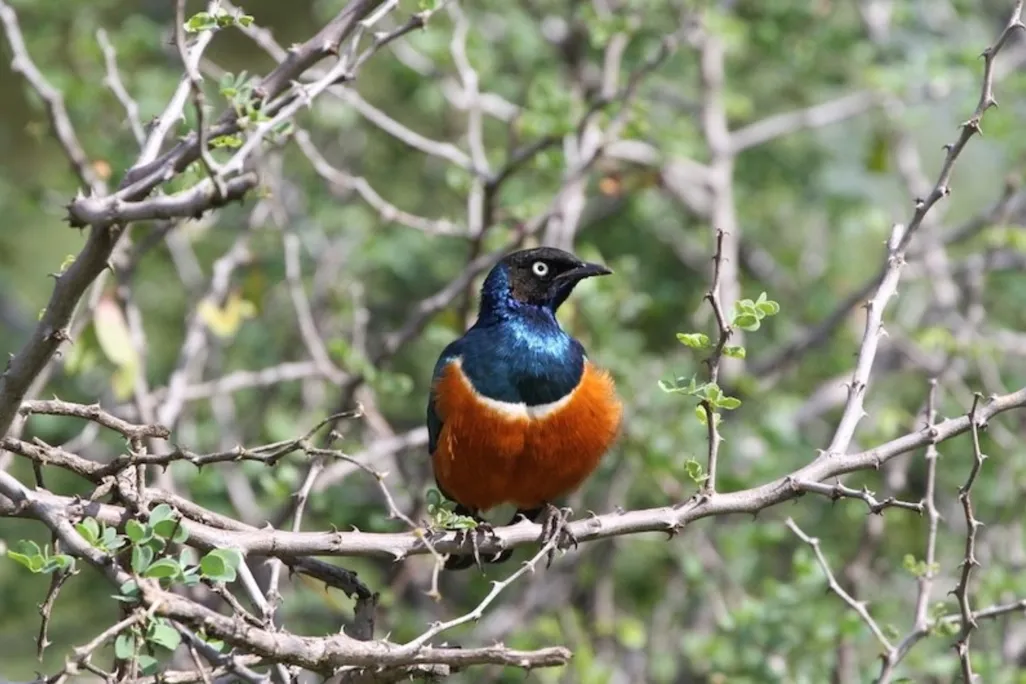WWW.SMITHSONIANMAG.COM
These Colorful Birds Form Long-Term 'Friendships' by Helping Out With Babysitting, Study Suggests
These Colorful Birds Form Long-Term ‘Friendships’ by Helping Out With Babysitting, Study Suggests
While scientists have observed animals assisting their relatives, a new study reveals that many superb starlings also form supportive relationships with non-relatives that can last for years
Researchers reveal that some superb starlings form long-term, friendship-like relationships.
Dustin Rubenstein
Superb starlings—medium-sized, often brilliantly colored birds in eastern Africa—work together to raise their flock’s young. And according to a new study, they reciprocally help each other out in friendship-like relationships.
After studying superb starlings for two decades, researchers suggest the birds support unrelated members of their flock in raising their chicks, with the expectation that those members will return the favor in the future. Their work is detailed in a paper published Wednesday in the journal Nature.
“This is the first real evidence of reciprocity in a cooperatively breeding bird,” Dustin Rubenstein, a Cornell University ornithologist and a co-author of the study, tells ScienceAlert’s Michelle Starr, “and one of the strongest pieces of evidence for reciprocity occurring outside of humans.”
While scientists have long observed animals supporting their blood relatives, the idea that some species also do so with non-relatives has been difficult to prove, because getting that kind of data would necessitate long periods of observation. For the recent study, Rubenstein and his colleagues collected behavioral and genetic information on nine flocks of superb starlings living in East African savannas across 40 breeding seasons, from 2002 to 2021.
A superb starling flock includes birds that are born into the group as well as “immigrants” that join from other families. Raising chicks is a communal effort—a set of parents might get help from up to 16 other birds, which deliver food to the hatchlings and fend off predators. But when the next breeding season comes around, these roles often reverse—birds that were previously raising offspring become helpers for new parents, for example.
“What happens is the non-relatives come into the group, and they breed pretty quickly, usually in the first year, maybe the second year, and then they take some time off and some of the other birds breed—and we never understood why,” Rubenstein explains to the Guardian’s Nicola Davis. “They’re forming these pairwise reciprocal relationships, in the sense that I might help you this year, and then you’ll help me in the future.”
Ultimately, the team’s analyses indicate that while starlings mostly supported their own relatives, many also reciprocally helped non-relatives, even when their family members could have pitched in instead. Notably, some of these relationships lasted for many years.
“The starlings are consistently investing in the same preferred social partners over their lives,” Alexis Earl, a biologist at Cornell University and lead author of the paper, tells the New York Times’ Asher Elbein. “To me, that sounds like friendship.”
The study joins a host of other research suggesting that various animals, including primates, crows, whales and elephants, form reciprocal relationships over long periods of time, per the New York Times.
Gerry Carter, a co-author of the study and animal behavior researcher at Princeton University, adds that the benefits of these so-called friendships probably intersect in ways that scientists still don’t understand, as reported by Joanna Thompson for New Scientist. Rubenstein tells the Guardian that superb starlings living in larger flocks have higher success rates at raising chicks and surviving overall.
Julia Schroeder, a behavioral ecologist at Imperial College London who did not participate in the study, tells the Guardian that the paper confirms previous theories about the birds’ “give-and-take” behavior and provides further evidence for the hypothesis that birds recognize each other individually.
Moving forward, the researchers aim to continue investigating the nature of these avian relationships, Rubenstein explains in a statement, such as how they form and why some endure while others don’t.
Get the latest stories in your inbox every weekday.
